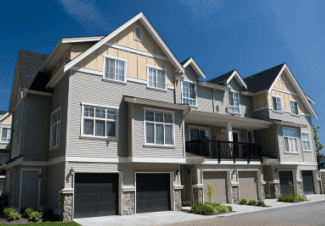Looking for Steady Income? The Rise of ‘Renter Nation’ Is Your Friend

You can largely thank Brexit, which has prompted the Federal Reserve to indefinitely take an interest rate hike off the table. Britain’s vote to leave the European Union will prove a drag on global markets, which should leave historically low rates in place into the foreseeable future.
At the same time, though, housing prices are quickly rising. The S&P/Case-Shiller National Index released in late June for the month of April showed that home prices continued to rise and were up 5% year over year for the month. It was the sixth consecutive month that home prices rose at a rate of 5% or greater.
The conventional way to profit from the housing sector’s boom is to buy homebuilding-related stocks such asHome Depot, Lowe’s or Lennar. These are great equities, to be sure, but the sector’s good fortunes already are built into their share prices. There’s another, more stable way to make money from housing’s renaissance: become a landlord.
Rising home values are pricing a lot of people, especially millennials burdened with student debt, out of the housing market. More than 8 million net new households were added over the past decade in the U.S., and renters accounted for all of them, according to this recent Chicago Tribune article. Home ownership in the U.S. has dropped to 63.5%, near a 48-year low, the article added. These trends are in turn jacking up rents around the country.
Below, we show you how to leverage “renter nation” into a steady stream of retirement income, by getting tenants to send you a check every month. We also unveil another ingenious investment method that makes reliable profits in good times or bad.
Investing in income-producing real estate is one of the most powerful ways for you to generate wealth. Your tenants are paying off the equity, while you enjoy home price appreciation and a bevy of tax breaks.
There is a major pitfall, though: If you overpay for your property, you’ll have a hard time recouping your investment.
When you pay too much, you immediately find yourself in a money-losing hole from which it could take years to recover. Even worse, you might never get back your money at all.
But if you pay the right amount for your property, there’s potential to reap steady, long-term returns as a landlord.
How to Make Money as a Landlord
As you might imagine, becoming a landlord involves a bit more than just plunking down little plastic houses and waiting for someone to land on your square, a la Monopoly.
However, the key to successfully turning a profit from property rental is actually quite simple: Do the math. The main factor to determine is whether or not you’re overpaying for your property.
Pay the right price and you’ll see the benefits for years. Rentals can be among the most powerful income-generating investments out there, throwing off steady streams of cash. Plus, while your tenants are paying off what you owe on the properties, not only will you make a profit, but you’ll also receive some handy tax breaks.
On the flip side, if you’re overpaying, not only will you never profit, but you’ll actually start bleeding money as your costs outweigh your income. That’s a scary thought.
Luckily, finding out how much to spend when evaluating property requires using just two simple yardsticks.
The first down-and-dirty metric to determine is something called the “gross rent multiplier:
Gross Rent Multiplier = (Selling price) / (Gross Annual Rental Income)
When calculating your gross rent multiplier (GRM), make sure that for your gross annual rental income you factor in not only what your tenants will be paying you, but any incidental money that you may receive, such as payments from vending machines, parking spaces and laundry facilities. Coin-op cash can go a long way.
Although the GRM doesn’t tell you much about an individual property, use this to compare several similar properties in the same area. Look for a smaller GRM in comparison.
Here’s a good rule of thumb for evaluating an individual property: If your prospective property’s selling price is more than seven times your gross annual rental income, you will end up losing money. Your income from the rental won’t be enough for both your mortgage and your operating expenses.
And forget assuming that by paying more as a down payment you can improve your cash flow. You’d be better off putting that extra money into safer investments such as Treasury bonds.
The other yardstick to use is the capitalization rate:
Capitalization Rate = (Net Operating Income) / (Total Investment)
Determine your net operating income by subtracting your operating expenses from your prospective property’s yearly gross income. Make sure that you count any costs you’ll pay while you own the property — maintenance charges, insurance, utilities, property (but not income) taxes, etc. — in your operating expenses.
It’s crucial that you determine the capitalization rate on a given property because this will let you know how quickly a rental property investment will pay for itself. A property with a capitalization rate of 10% will take 10 years to pay for itself. It’s a good idea to keep this rate at around 8%.
When calculating your metrics in order to evaluate a property, make sure that your numbers are as accurate as possible. It’s very common to be so excited about a potential real estate deal that you even lie to yourself to see the numbers you want. But that won’t do you any favors.
Also remember that your best bet for investing in rental estate is by purchasing multifamily houses or multiunit apartment buildings. You’ll get way more bang for your buck than you would from a single-family home or condo unit.
As you can see, becoming a landlord could be the smartest, safest investment you ever make … as long as you follow our simple guidelines.
Source: thestreet.com















 Accessibility
Accessibility